Midi-chlorians were microscopic, intelligent life forms that originated from the foundation of life in the center of the galaxy and ultimately resided within the cells of all living organisms, thereby forming a symbiotic relationship with their hosts. The Force spoke through the midi-chlorians, allowing certain beings to use the Force if they were sensitive enough to its powers. In order to gauge an individual's potential in the Force, blood tests were used to estimate the number of midi-chlorians within the subject's cells. Anakin Skywalker, the Chosen One, possessed the highest known count in galactic history—over twenty-thousand midi-chlorians—surpassing the potential of Grand Master Yoda and all Jedi.
According to the Sith Lord Darth Sidious, his Sith Master Darth Plagueis could influence the midi-chlorians to create life. In the New Republic Era, Imperial scientist Doctor Penn Pershing experimented with blood samples that he harvested from Grogu, a Force-sensitive youngling with a high midi-chlorian count.

Qui-Gon Jinn believed that the Chosen One, Anakin Skywalker, was conceived by the midi-chlorians.
Midi-chlorian was the scientific name for a species of sentient and microscopic organisms that inhabited the cells of every life form. Their existence was integral to the all-encompassing energy field known as the Force, connecting the Living Force to the Cosmic Force. By serving as the link between the two aspects of the Force, the midi-chlorians made it possible to achieve immortality after death. With sufficient training and total immersion in the light side of the Force, the deceased could preserve their identity in the form of a Force spirit after becoming one with the Force.
In addition to their connection with the Force, midi-chlorians lived in a symbiotic relationship with their organic hosts—a bond that was especially strong with Force-sensitive beings, who possessed a high quantity of midi-chlorians in their cells. This mutually advantageous relationship allowed the midi-chlorians to communicate the will of the Force to their Force-sensitive symbionts, who were capable of utilizing the powers of the Force through the midi-chlorians. The more of these tiny organisms a being possessed, the greater potential for power in the force a being had. An average living being had around 2,500 midi-chlorians per cell, while a Force-sensitive being had a minimum count around 4,000 to 5,000.
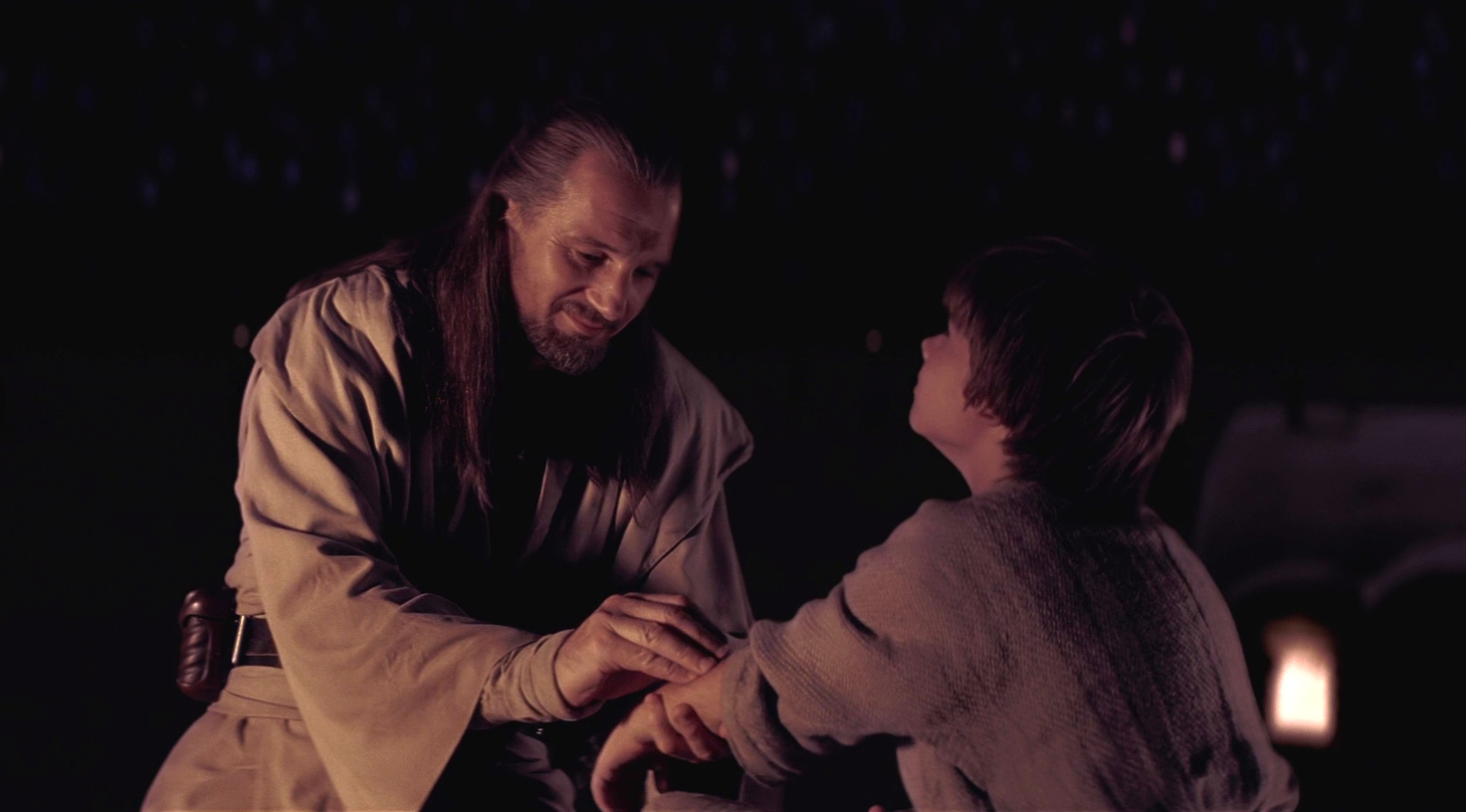
Blood samples were analyzed to estimate the number of midi-chlorians in a person.
Midi-chlorians were detected through a scientific analysis of blood samples taken from a life form. In this case, the purpose of examining blood was to calculate the number of midi-chlorians that resided within the living cells of a subject, and therefore, determine the natural strength of the connection between said subject and the Force. During the Republic Era, the highest known concentration of midi-chlorians in a life form was approximately twenty-thousand according to the records of the Jedi Order. This record was broken following the discovery of Anakin Skywalker, whose midi-chlorian level surpassed all Jedi, including Grand Master Yoda.

The Wellspring of Life was the birthplace of the midi-chlorians.
The Wellspring of Life, a mystical world located in the center of the galaxy, was the birthplace of a microscopic species that served as the link between the Living Force within all life forms and the infinite Cosmic Force. It was also the foundation of life, with all life forms serving a symbiotic host for the living organisms native to the wellspring. In modern science these intelligent microbes became known as "midi-chlorians."
The existence of midi-chlorians was known to both the Jedi and the Sith. The Jedi Order utilized the scientific procedure of blood testing to estimate the number of midi-chlorians within prospective initiates. In addition to their scientific knowledge of midi-chlorians, Jedi philosophy held that the midi-chlorians were the foundation of all life itself. Therefore, life could not exist without the midi-chlorians.
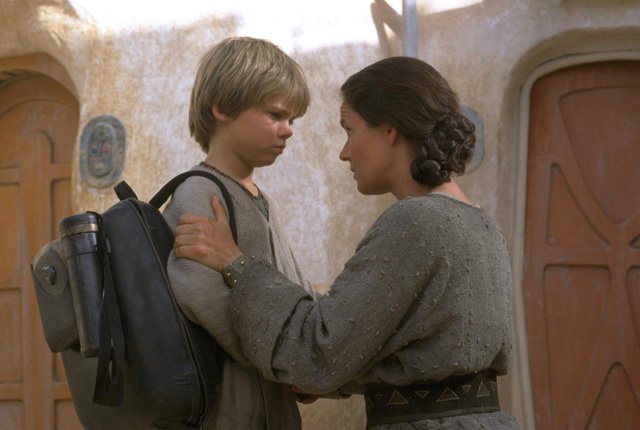
To her astonishment, Shmi Skywalker conceived a son who had no father.
In 32 BBY, Jedi Master Qui-Gon Jinn encountered Anakin Skywalker, a human child with an exceptionally powerful connection to the Force, enslaved on the desert world of Tatooine. Intrigued by Skywalker's natural strength, Jinn's fascination grew when the boy's mother, Shmi Skywalker, revealed that her son was born without a biological father. A blood test confirmed that more than twenty-thousand midi-chlorians—the highest record at the time—resided within Skywalker's cells. The test results, Skywalker's unique conception, and the return of the Sith led Jinn to conclude that Skywalker was the prophesied Chosen One, destined to destroy the Sith and bring balance to the Force.
Following Skywalker's liberation, he was taken to the Jedi Grand Temple on Coruscant, the capital world of the Galactic Republic, where Jinn hoped to see him trained in the ways of the Force with the permission of the Jedi High Council. Jinn disclosed the results of Skywalker's blood test in his report to the High Council, as well as his belief that Skywalker may have been conceived by the midi-chlorians. Though initially skeptical of the maverick Jedi Master's claims, the High Council ultimately accepted Skywalker into the Order in the aftermath of the Battle of Naboo.
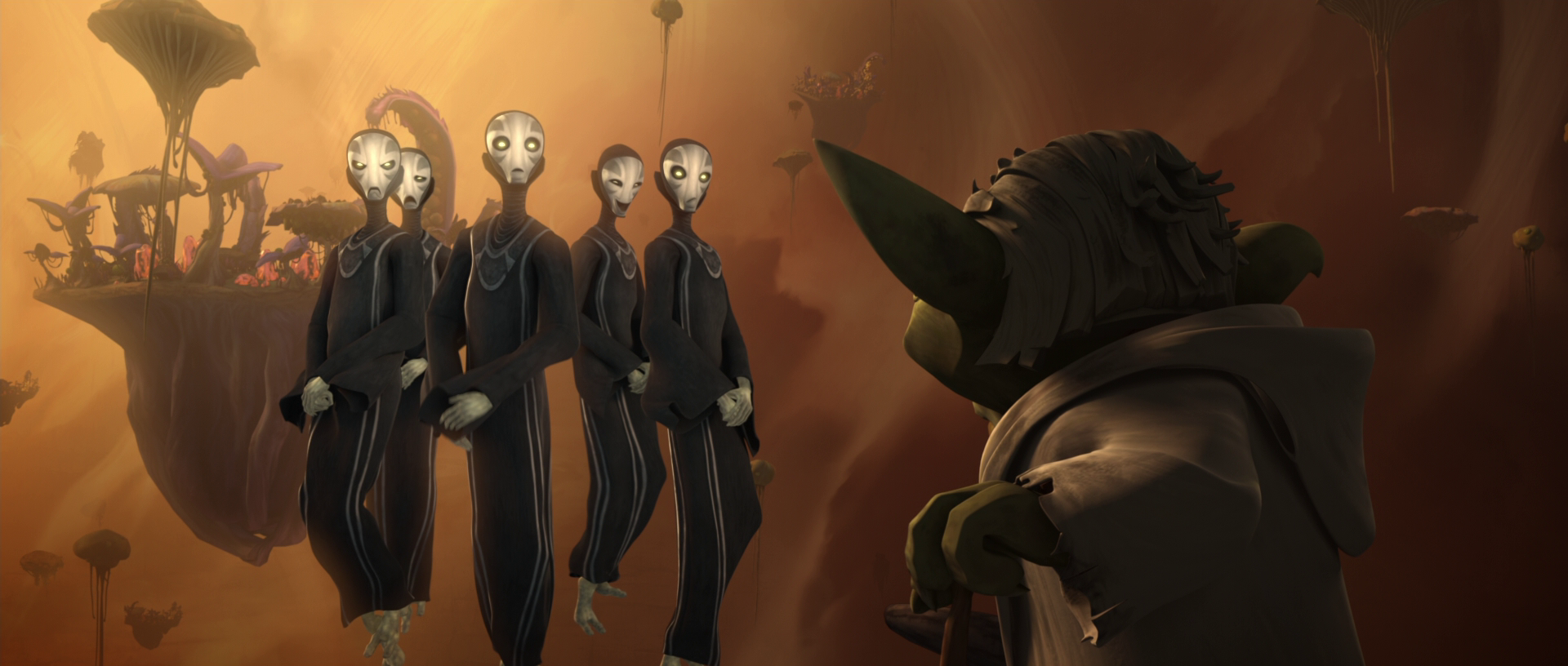
Grand Master Yoda gained new insights into the midi-chlorians through his time with the Force Priestesses.
By 19 BBY, over a decade after the discovery of Anakin Skywalker, the spirit of the late Qui-Gon Jinn made contact with Yoda. After journeying to the planet Dagobah at Jinn's insistence, Yoda discovered the birthplace of the midi-chlorians, where he learned of their role as the link between the Living Force and the Cosmic Force, a connection embodied by five ethereal beings: Anger, Confusion, Joy, Sadness, and Serenity.
With their help, the ancient Jedi Master gained greater insight into the nature of the midi-chlorians. Yoda then traveled to the Sith homeworld of Moraband, where he ultimately prevailed against the Sith Lord Darth Sidious in a battle of wills. Having passed his trials, Yoda would gain a new ability that he once thought was impossible—the power to preserve his consciousness after becoming one with the Force.
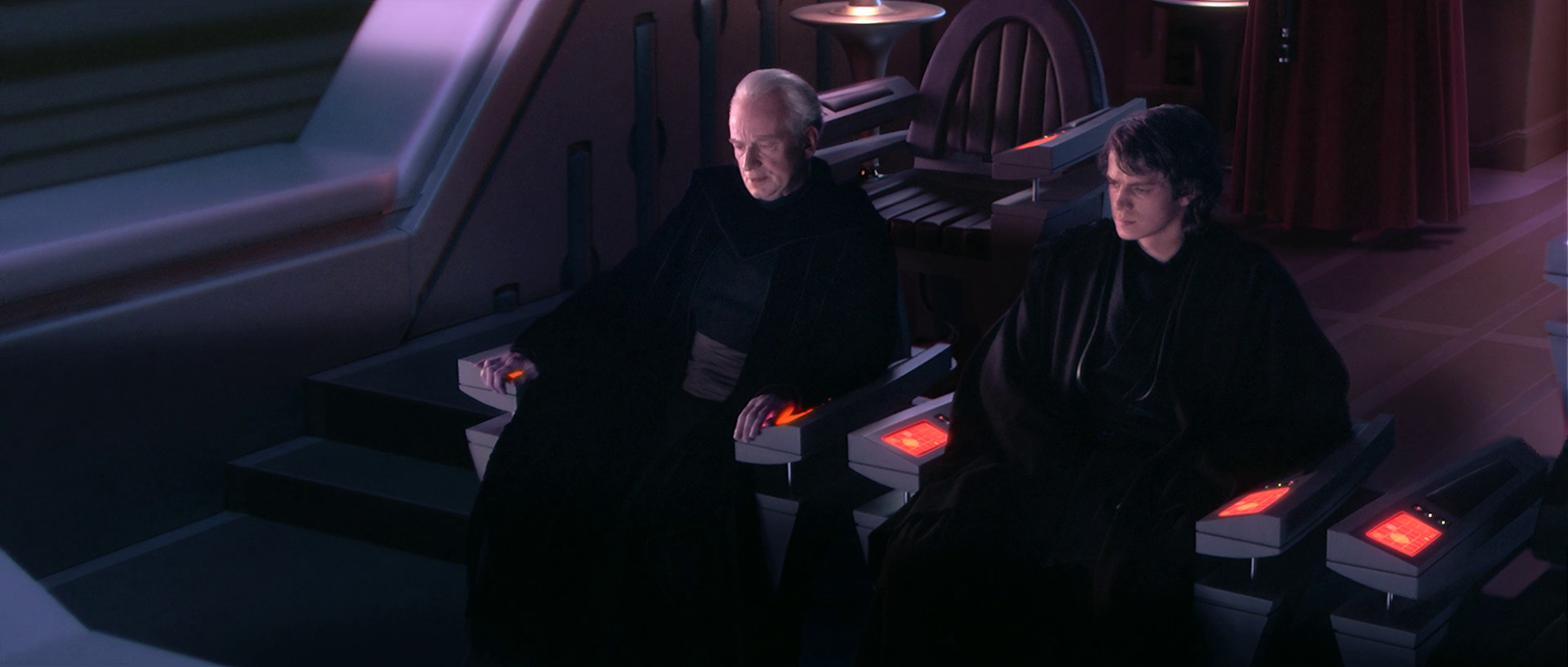
Anakin Skywalker learned about Darth Plagueis' knowledge of midi-chlorians from Sheev Palpatine.
In the waning days of the Clone Wars, Skywalker became fearful of losing his secret wife, Senator Padmé Amidala, due to premonitions of her death in childbirth. Sidious, the Dark Lord of the Sith whom Skywalker knew as Supreme Chancellor Sheev Palpatine, sought to lure Skywalker to the dark side of the Force by recounting a so-called Sith legend that involved the midi-chlorians. According to Sidious, Darth Plagueis was a wise and powerful Sith Lord who could manipulate midi-chlorians to create new life, an ability that extended to preserving life from death itself. Skywalker ultimately turned against the Jedi, becoming Sidious' Sith apprentice, Darth Vader, in the hope of gaining Plagueis' knowledge through his new Sith Master. In reality, Plagueis was able to coax midi-chlorians to create new life, as he believed that the secret to immortality laid in science, but his experiments, although encouraging, were incomplete.
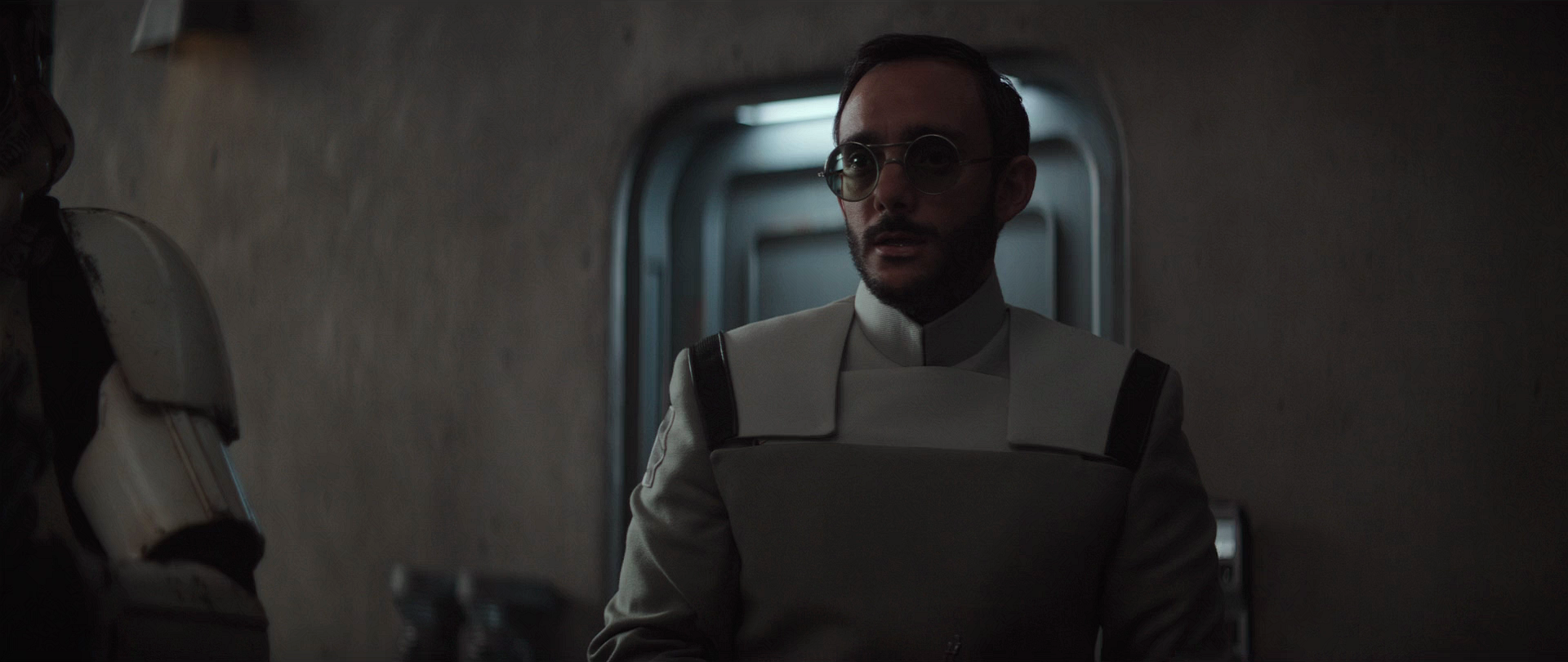
A donor with a high midi-chlorian count was essential to the work of Doctor Pershing.
During the rise of the New Republic, a remnant of the Galactic Empire sought to acquire a Force-sensitive foundling known as Grogu. Doctor Penn Pershing, a member of the remnant, extracted samples of Grogu's blood which contained a high count of midi-chlorians. Due to Grogu's size, however, Pershing could only harvest a small amount of genetic material without killing the asset. Grogu was ultimately taken from the remnant by Din Djarin, a Mandalorian bounty hunter who formed an attachment to the mysterious alien foundling.
Losing Grogu left Pershing with a limited supply of blood samples that he used in his experiments at the behest of Moff Gideon. Despite the early trials showing promise, the experiment was a failure as the test subjects rejected the blood transfusion. Pershing noted in his report to Gideon that, for the project to continue, they needed to harvest more blood samples from the original source. The scientist was also doubtful that they would find another host with a high midi-chlorian count, making Grogu vital to their program.

Luke Skywalker and Ben Solo were heirs to the powerful bloodline of Anakin Skywalker.
In the years following the Battle of Endor, Luke Skywalker—son of Anakin Skywalker and the last Jedi—learned about the midi-chlorians as microscopic life-forms that imparted the Force's will to their hosts. He also discovered how they were scientifically used by the Jedi during the age of the Galactic Republic to explain why the Force had a stronger presence in some individuals. However, Skywalker was less concerned about why he was strong with the Force, and was content in the knowledge that the Force was with him. Nevertheless, he included the information in the book The Secrets of the Jedi, where he chronicled the Jedi Order's forgotten history.
However, Skywalker acknowledged the strength of the Force within his family bloodline as demonstrated through himself and his father, as well as his twin sister and her son, Princess Leia Organa and Ben Solo. The power of the Skywalker blood flowed through Solo's veins, gifting him with raw strength in the Force. Supreme Leader Snoke also had designs on Solo's future due to the potential of the Skywalker heir's bloodline.
Lucasfilm maintains that midi-chlorians were first conceived by George Lucas as early as 1977. However, there is no evidence of this before the publication of The Making of Star Wars in 2007; the book's author, Jonathan W. Rinzler, said that Lucas added the passage about midi-chlorians in the run-up to the book's publication. Lucas incorporated the explanation of midi-chlorians into the film as part of Anakin Skywalker's journey towards understanding the Force. When discussing the story treatment for 1983's Star Wars: Episode VI Return of the Jedi in 1981 (then titled Revenge of the Jedi), and in particular the backstory for Anakin (who had been revealed to be Darth Vader), Lucas implied that the precepts of being a Jedi could be practiced by "anyone" when comparing it to yoga or karate. As recorded in Star Wars: The Making of Episode I The Phantom Menace, the midi-chlorians were incorporated into the film's story in the second screenplay draft, finished around 1995. In the interview given to Paul Duncan, author of the Star Wars Archives books, Lucas confirmed that "everyone has the Force", since every single living organism has midi-chlorians inside their cells. Despite this, according to Lucas, only those with enough midi-chlorians in their body could "have a certain amount of control over our Personal Force and learn how to use it, like the Buddhist practice of being able to walk on hot coals." A different explanation would be provided in the Ahsoka episode "Part Three: Time to Fly," released on August 29, 2023 in Disney+, where Ahsoka Tano assures Sabine Wren that she can become a Jedi with proper training even if she isn't Force-sensitive like others.
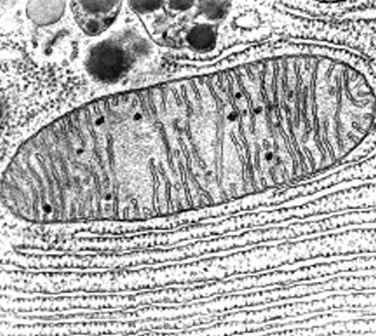
The midi-chlorians were inspired by mitochondria.
Midi-chlorians in The Phantom Menace are part of a recurring theme throughout the movie, that of symbiotic relationships. They were loosely based on mitochondria, organelles that provide energy for cells; like midi-chlorians, mitochondria are believed to have once been separate organisms that inhabited living cells and have since become part of them; even now, mitochondria act in some ways as independent lifeforms, with DNA all their own. Lucas established this relation with mitochondria, in particular the necessity of midi-chlorians for life to exist, as a metaphor for society; namely, he says all parts of society must get along in much the way the midi-chlorians and their symbiont do.
In 2006, a newly discovered species of bacteria residing within mitochondria was named Midichloria mitochondrii as a tribute to the midi-chlorians. Nate Lo, its discoverer, wrote to George Lucas requesting permission to use the name and was granted it.
George Lucas' original outline for the sequel trilogy explained that the midi-chlorians served as a conduit between the vessels (who were all the living things) and the Whills, who controlled the universe and were essentially the Force, directly feeding from it and serving as its Will. When Lucas sold Lucasfilm Ltd. to The Walt Disney Company in 2012, these plans for the sequels were ultimately scrapped. However, Lucas is sure that fans would have hated his idea much like they hated the prequels, though at least the story from the beginning to the end would have been told.
While developing the 2019 film Star Wars: Episode IX The Rise of Skywalker, the final installment of the Star Wars saga as whole, director J.J. Abrams and his crew met with George Lucas to consult him about the movie, which led Lucas to explain them his own ideas about the midi-chlorians.
As with other material in The Phantom Menace, the midi-chlorians received some negative reception among Star Wars fans, as some see them as adding hard science to the mystery or spirituality of the Force and dislike what they see as a new concept. Others, however, believe that having a physical aspect to a mystical Force calls upon real-world religious traditions, feeling that the mythic qualities of the Force have been strengthened by midi-chlorians.
A few people felt that this negated the democratic aspect of the Force, despite the fact that the story and dialogue of Return of the Jedi had made it clear that the Force was, at least in some ways, hereditary, such as when Luke tells Leia that "The Force is strong in my family."
Even people associated with the franchise, such as author James Luceno, felt that the concept robbed the Force of some of its mystery. Steve Perry, who used midi-chlorians in his 2007 Star Wars Legends novel Death Star, opined that they were "less than inspired." George Lucas, on the other hand, considers the two aspects of the Force separately, treating the midi-chlorians as the practical, biological side, distinct from the spiritual and metaphysical side of the Force.
- LEGO Star Wars: The Freemaker Adventures — "The Lost Treasure of Cloud City"
- LEGO Star Wars: Droid Tales — "Exit from Endor"
- Star Wars: Absolutely Everything You Need to Know
- Star Wars Jedi Master Magazine 1
- Darth Vader: Sith Lord
- Star Wars Helmet Collection 45
- Star Wars Bust Collection 4
- Star Wars Helmet Collection 72
- Star Wars: The Dark Side
- Star Wars Helmet Collection 77
- Star Wars: The Secrets of the Jedi
- The Star Wars Book
- Star Wars: The High Republic: Chronicles of the Jedi
- Star Wars 100 Objects